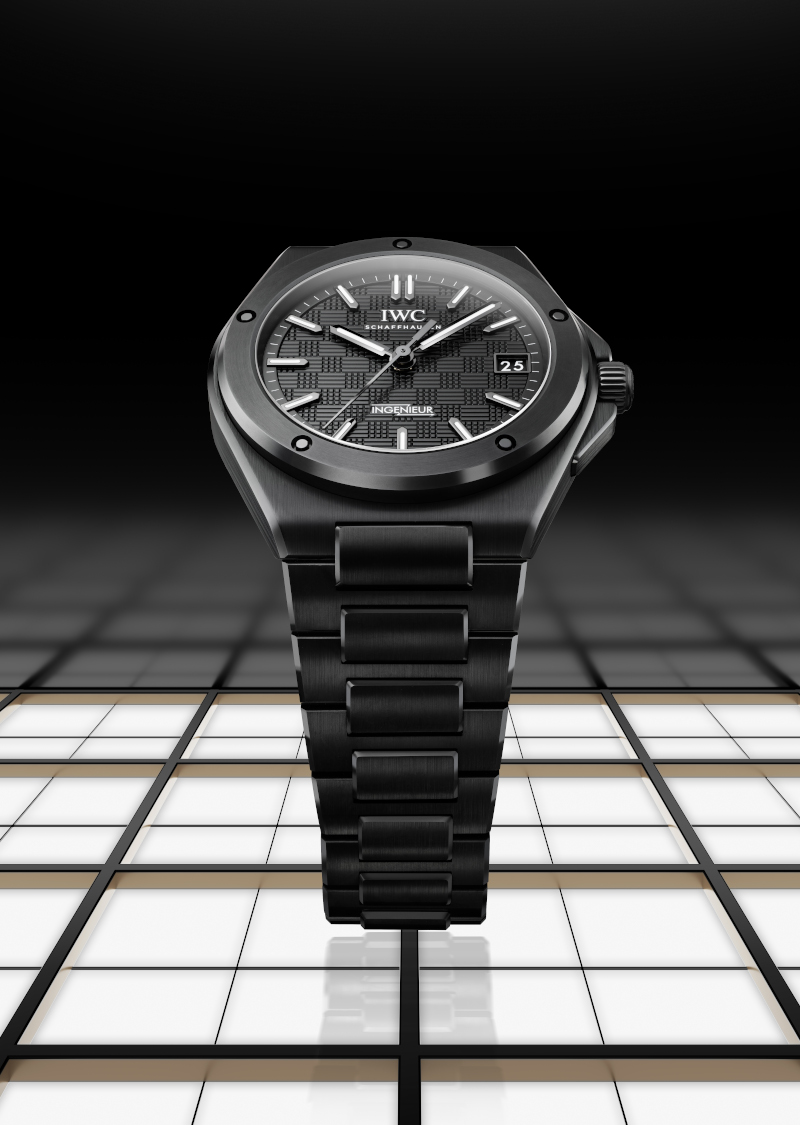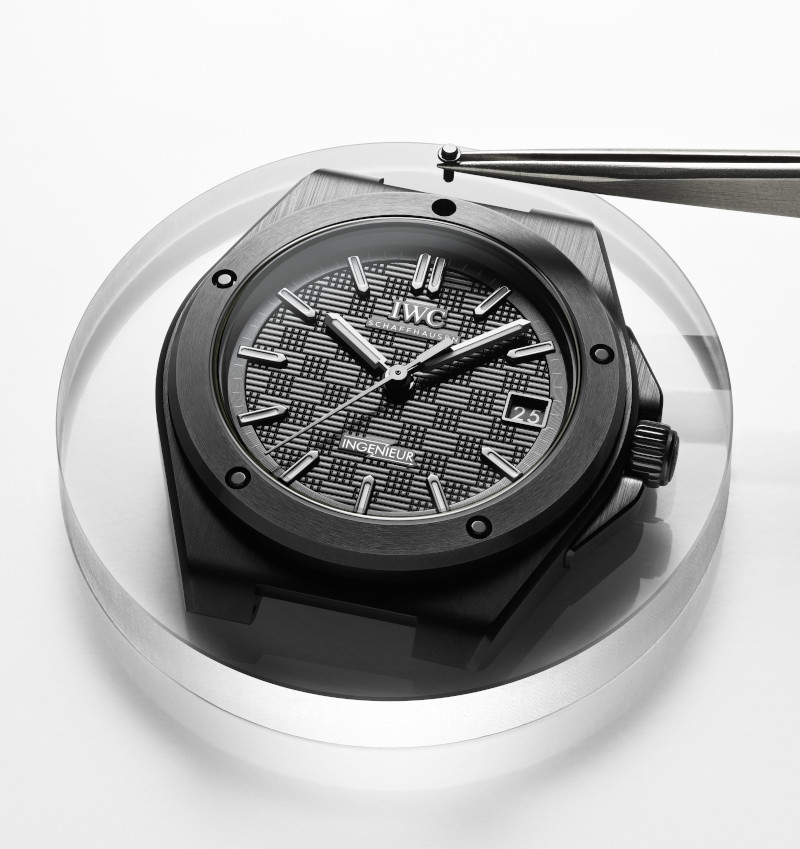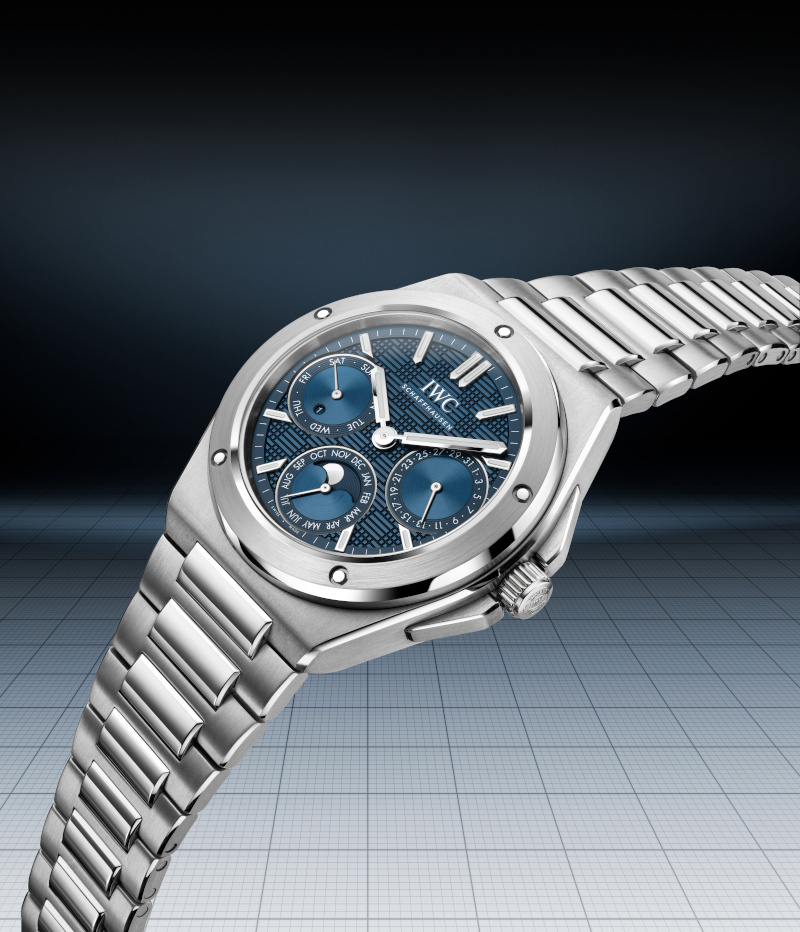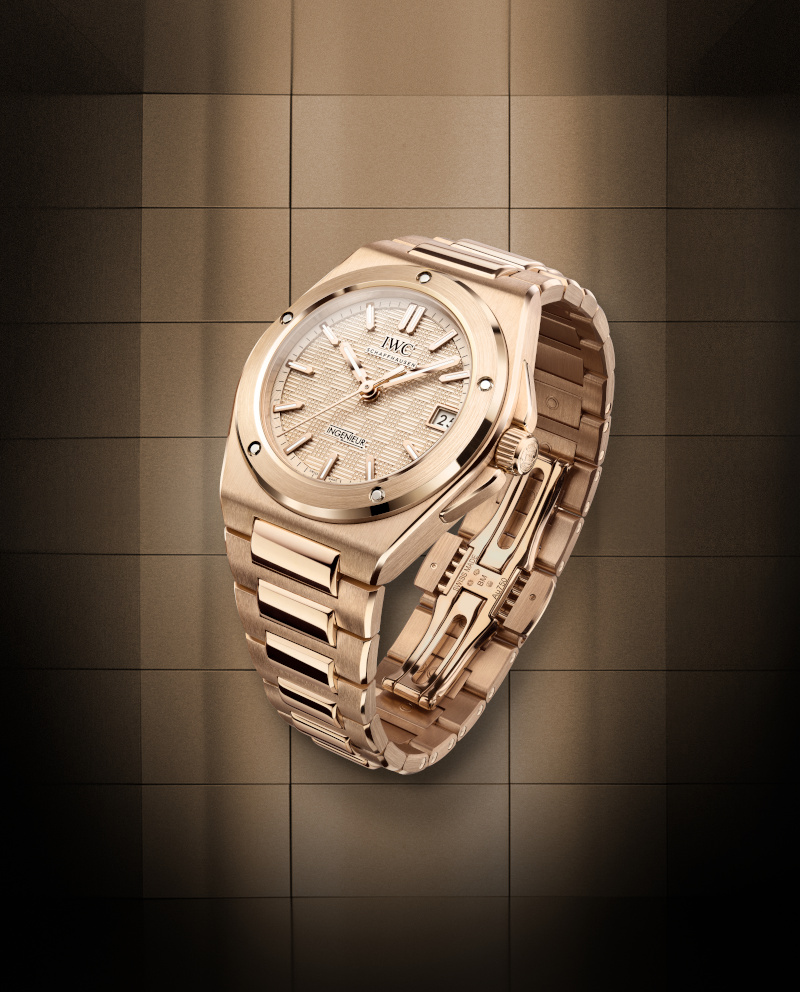Blancpain Grande Double Sonnerie Rings It in Twice
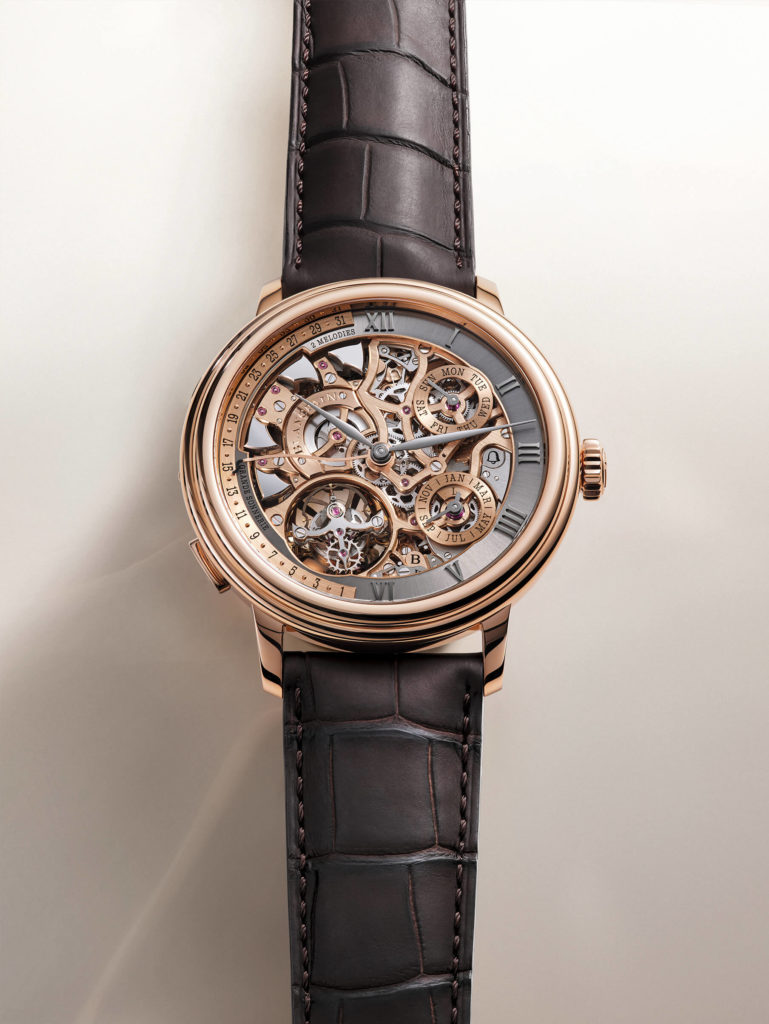
Without beating around the bush needlessly, a chiming or striking watch is a rarity in watchmaking. A genuine one. The rarest of these types of watches is a grand and petite sonnerie, with many specialists having decades of experience probably only ever experiencing a handful. Basically, this is the very pinnacle of watchmaking, from which you can look down and just about make out the minute repeater. Well, Blancpain has gone one better with its latest superwatch, the Grande Double Sonnerie Ref 15GSQ, a watch that adds a compelling new chapter to the story of fine watchmaking.
To celebrate this incredible milestone, Blancpain did the unthinkable: invite the aforementioned specialist press for an exclusive preview. The editors of WOW Singapore, Malaysia and Thailand thus all got together at the Blancpain facility at Le Brassus to discover this watch, which is the first in the world to have two selectable ways to sound the time. To be able to learn about Ref. 15GSQ from the people who made it themselves, ahead of the watch’s public debut, is invaluable.
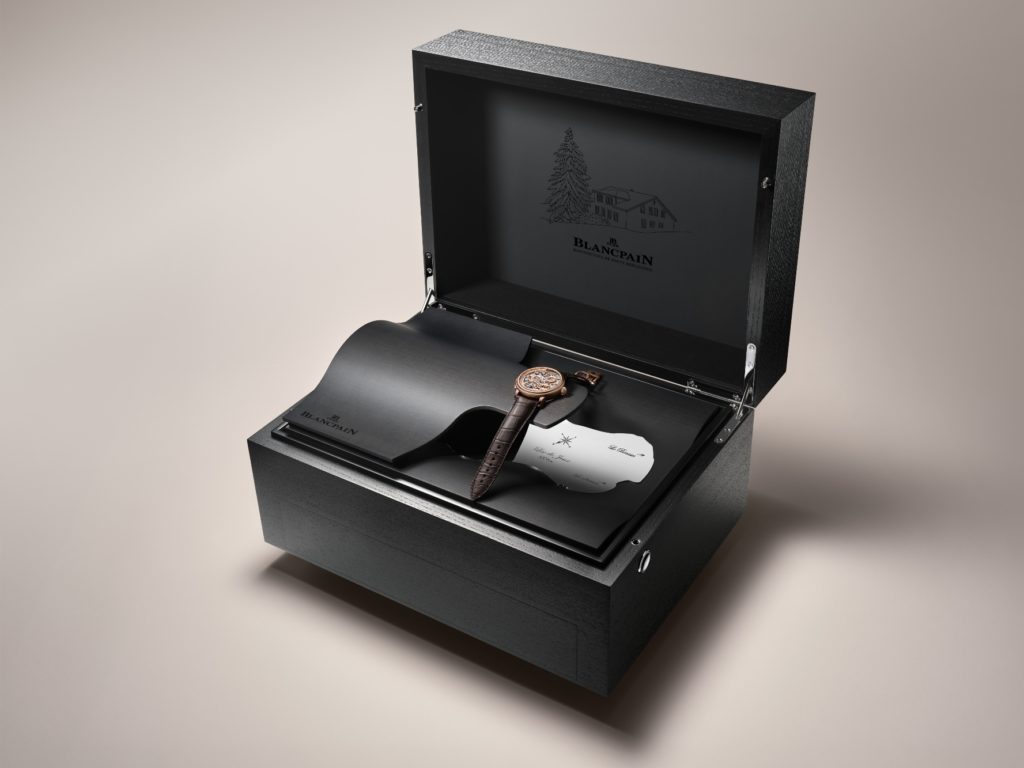
As befits such a momentous occasion, the editors devote a great deal of attention in the story that follows to how the Grande Double Sonnerie works, including a brief primer on the grande sonnerie in general. Ahead of that, here are some details on Ref. 15GSQ, of which there are two versions – one in red gold and one in white gold. This also means that the mainplate and bridges of the integrated calibre (also named 15GSQ) are executed in the matching gold. In addition to the aforementioned grande and petite sonneries, the watch also features a minute repeater; a 4 Hz flying tourbillon with silicon balance spring; a retrograde perpetual calendar; and power reserve indicators for both the chiming mechanism and the movement overall.
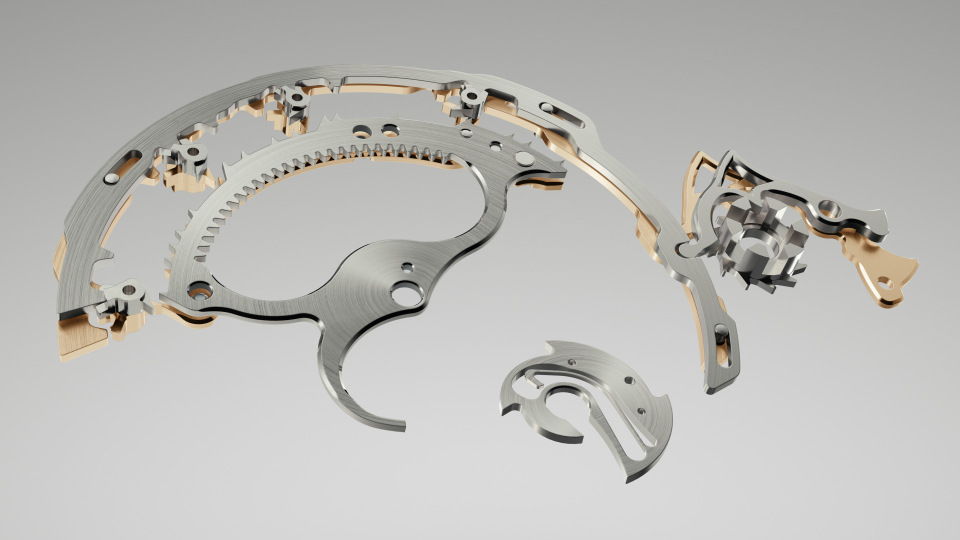
Daniel Goh (DG): Greetings from Malaysia! I hope everyone is well rested and acclimatised from our very secret, and at least for me quite brisk trip, to Le Brassus for a first look at this insane project from Blancpain. I think we mentioned in our last Tick Talk segment that this trip was the first time where the editors of WOW Singapore, Thailand and Malaysia were on the same press trip. And this affords us a very special opportunity to have a spirited discussion about the watch in question.
We saw the watch precisely two weeks ago and I am glad we are getting to this discussion so soon because the amount of information we received about the piece was staggering to say the least. So I think it is best we put our thoughts down on paper, while all of it is still fresh in our minds.
Ashok Soman (AS): It is certainly the first time I recall all editions being in the same presentation, outside of a watch fair! We have been at the same event or something, but not all together for just one watch. As you say, it was one heck of a watch that came with a tonne of information…and a pair of drumsticks. It was like, “What just happened…” I was tickled though that the NDA we all had to sign had the name of the watch as its title!
Ruckdee Chotjinda (RC): Grande Double Sonnerie … How about we start this article from here? Can I please have a refresher on what a sonnerie is, to begin with?
AS: Happily, Blancpain anticipated that very question and provided a neat answer, and from the watchmakers who developed the world’s first double sonnerie. So, I guess we should begin by addressing the type of watch, which is of the striking variety; it sounds out the time, basically. It is part of a grand tradition of what we in the trade call striking or chiming watches and represents the very pinnacle of fine watchmaking.
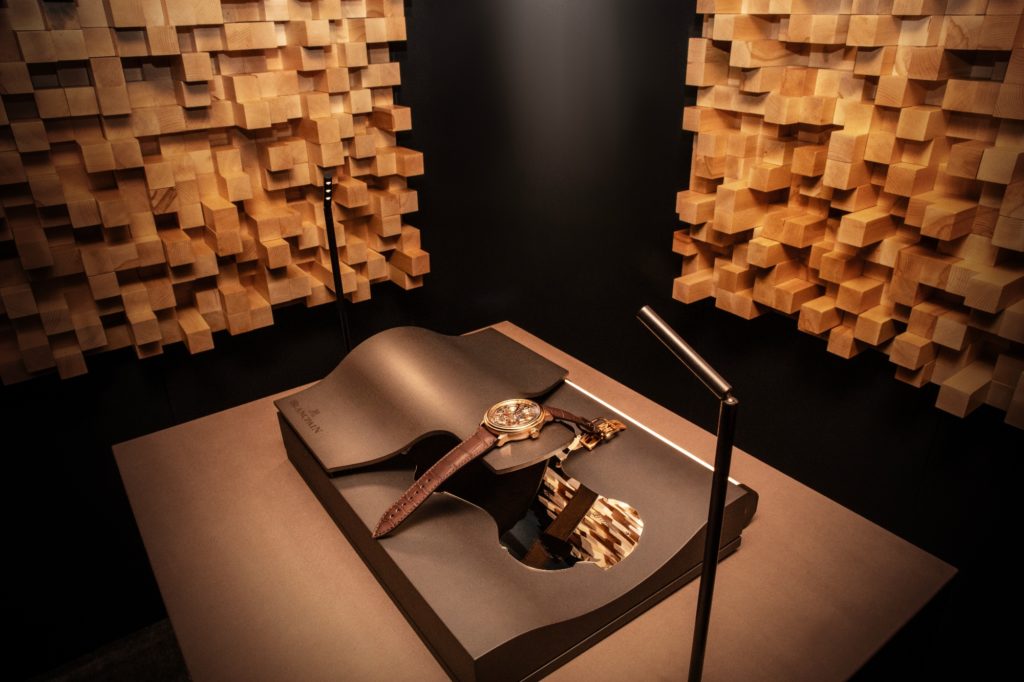
This is no overstatement. A chiming watch is at least an order of magnitude more challenging to execute than a tourbillon. A watchmaker typically can start working on tourbillons years before he or she can attempt a chiming watch. The orders of magnitude go up as you move up the scale, from minute repeaters to grande sonneries. That last was the peak, until now. What Blancpain has done here is nothing less than finding a new highest point, but I am getting ahead of myself! Let me say that the Grande Double Sonnerie sounds out the time, meaning the hours and quarters, both on demand and automatically. It also sounds out the minutes, like a minute repeater, on demand. Blancpain added a twist here, which is what elevates the watch, by giving the lucky owner not one but two musical phrases to choose from: the standard Westminster chime or a Blancpain tune!
DG: For me it was fascinating to learn that there were no wristwatch grande sonneries until 1992. This style of chiming has existed for centuries on the massive tower clocks and subsequently pendulum clocks so it was surprising that they didn’t or maybe couldn’t include this complication within the compact confines of a wristwatch until that year. One would have thought that someone would have attempted it earlier.
So basically, until 1992, all chiming coming out from a wristwatch was done via a minute repeater complication. And the difference is that a minute repeater is activated via a slide that also provides the energy required for the chiming mechanism while the sonnerie, both grande and petite, gets its energy from a mainspring within the movement. And from what we have been told from the many master watchmakers at Blancpain, the sonnerie, although similar in functionality to the minute repeater, is much more complicated to produce.
RC: Hmmm … I’m glad I asked for the refresher because striking watches have never been my forte. They account for a very small percentage of watches I see each year. I think that goes to show how rare the complication is in terms of quantity in relation to other, more common mechanisms out there. I even had to look up the difference between a petite sonnerie and a grande sonnerie before my outbound journey to Le Brassus, just to make sure that I have my facts right.
So, for the completeness of the refresher provided above by my esteemed colleagues, let me add a bit of information. Both petite sonnerie and grande sonnerie strike the hours at the top of each hour. The difference is at the quarters where a petite sonnerie would strike only the quarters while a grande sonnerie goes on to strike both the hours and the quarters. The action is autonomous (or “en passant”, as the term is often used in horological literature), unlike a minute repeater that is activated on demand. A sonnerie watch would have a selector for the owner to put it in either petite sonnerie, grande sonnerie or silent mode. The same is true for this Blancpain Grande Double Sonnerie with the “Ps-Gs-Sil” selector on the case band on the 9 o’clock side.
DG: And it is not just about the mechanical complexity with a sonnerie right, there are so many other intangible qualities to a chiming watch. The tonality, quality, and strength of the sound produced add to the appreciation of the watch, which all need exceptional fine-tuning from very experienced ears. This makes Blancpain’s Grande Double Sonnerie all the more special right? Double the sonnerie means double the effort!

AS: We often say that a chiming watch is like having Big Ben on your wrist, as a sort of shorthand explanation. That is where the whole Westminster chimes reference comes from. With the Grande Double Sonnerie, we effectively get two clocktowers in one wristwatch. The second one is a tower of rock though because the tune was composed by drummer Eric Singer of Kiss fame. If that is not enough, most sonneries use just two notes but Blancpain doubled that too, with four notes here! And it is those four notes that form both the Singer-penned melody and the Westminster chime. As you might imagine, this means there are parallel tracks in the mechanical system tied to each melody. Crazy stuff but I will take a breath now before I race ahead of myself yet again…

DG: Can I just also add that while going from a traditional two-note to a four-note chiming mechanism may sound like a simple thing but as with most things in watchmaking, it is most definitely not. Four notes mean that the watch sounds a melody and with something as recognisable as a Westminster chime, you need to nail the pitch and tempo spot on because if not our ears would immediately be able to sense that something is off, and make the chiming unpleasant to hear. The adjustment for the tempo alone was crazy, we are talking about shaving off microns from the teeth of the pièce des quarts that controls the timing of the sonnerie, testing and then adjusting until it is perfect. It isn’t surprising at all that with work like this, Blancpain is only able to make two of these each year.
AS: Since we are in the spirit of chiming in here, let me also add that in terms of those microns Daniel mentioned, these are filled off with special tools that Blancpain developed just for this. And if the watchmaker shaves too much off, they have to throw away this piece. It takes days just for this part, on average, apparently, and there is a lot of trial and error to nail down the process. This is perhaps unsurprising given that Blancpain is reengineering the sound, even if it is not recreating the whole sonnerie mechanism.

RC: And then you have the important matter of the power reserve … or power reserves in this case, as there are two separate barrels: one for the regular timekeeping and another for the striking mechanism. Both are wound by turning the crown (i.e. counterclockwise for the former and clockwise for the latter). I noticed when reading the specifications though that there is a vast difference of eight times between the 96 hours of the regular running train and the 12 hours of the sonnerie and the minute repeater, if the watch is set in the grande sonnerie mode where energy consumption is highest. So during my interview with Mr. Marc A. Hayek, I asked if it would have been technically possible for the striking mechanism to have a 24-hour reserve if the running time of the other is reduced to 48 hours, for example. The answer was no.
Given the amount of energy used by the grande sonnerie, even if they were to reduce the power reserve of the timekeeping by half, they would have gained only two to three hours more for the striking mechanism. Also, the 12-hour reserve should suffice in real life as the use of striking mechanism is expected only during waking hours. Besides, despite the privileged luxury of having a sonnerie watch, a person is unlikely to have the complication turned on for the whole day because the chimes at every quarter can be excessive.
My conclusion: the current setup is ideal and most practical, especially considering the important fact that the Grande Double Sonnerie features a perpetual calendar complication as well, and with a retrograde date hand to boot!

AS: Power reserve and amplitude questions are key for sonneries, for the reasons you note, it also helps that calibre 15GSQ is integrated, not modular, so everything can be optimised for the specific needs of the Grande Double Sonnerie. This also plays into how the watch wears, since we are on a slightly more practical train here, as you might think that the watch will be monstrous on the wrist. The dimensions are 47mm (diameter) and 14.50mm (thickness) so not a small watch by any stretch but also not overwhelming. The movement itself is 35.8mm in diameter and 8.5mm thick, with 1,053 components for the movement.
DG: Speaking of optimised, I like how even though the complications are integrated, they each have their own little space within the movement. I often forget, because the double sonnerie is so interesting, that the watch is also a grande complication. It has a perpetual calendar and a flying tourbillon and each occupy roughly one third of the movement. This was the reason one of the watchmakers mentioned that they had to go with a retrograde perpetual calendar as it was the only way to fit. And this probably helped them keep the dimensions to a much more wearable size.
Marc A. Hayek was adamant that even though they were making a grande complication he didn’t want the watch to just sit in a safe somewhere, he wanted it to be worn and with these dimensions I think the watch is highly wearable. Okay, it probably won’t fit under the sleeve of a shirt anytime soon, but with a watch like this you probably wouldn’t want to hide it anyway. You probably want to take it out and show off the watch because the finishing on this thing is absolutely insane as well.
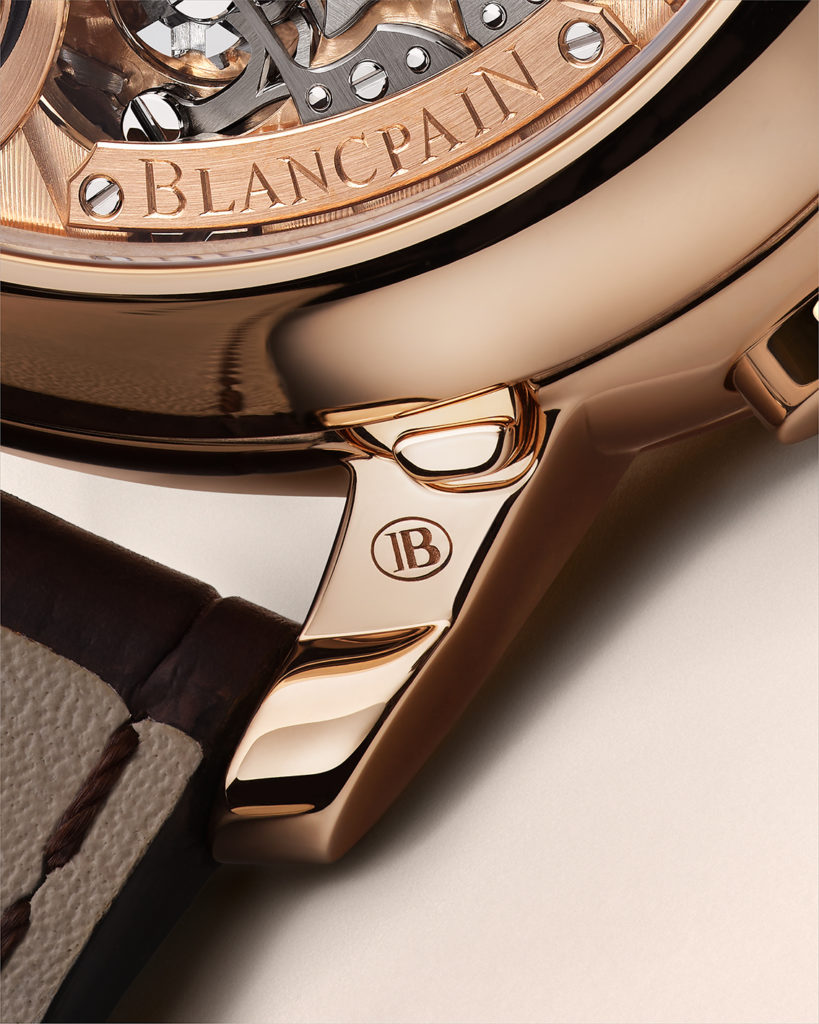
RC: I wish though that it was possible for us to try the watch on fully strapped. That would have given me an even clearer comparison with similarly large watches. Since this article is dedicated to Blancpain, I will refrain from bringing up model names belonging to other brands. But I will say that, if you can wear the Fifty Fathoms in the 45 mm size, then chances are that you can wear this masterpiece. At 15.5 mm, the Fifty Fathoms is even 1 mm thicker than the Grande Double Sonnerie. I hope this bit of comparison helps, dear readers.
AS: I very much like that this watch is not meant to be a safe queen; it is also water-resistant to 10 metres, which is better than most such watches. Chiming watches are about as water-resistant as sponges. That commitment to wearability is also why Blancpain will make (roughly) two a year, which is an astonishing commitment. When we visited, the watchmakers explained that all the work, in terms of fine finishing, is shared in the high complications workshop between artisans who are also working on other movements.
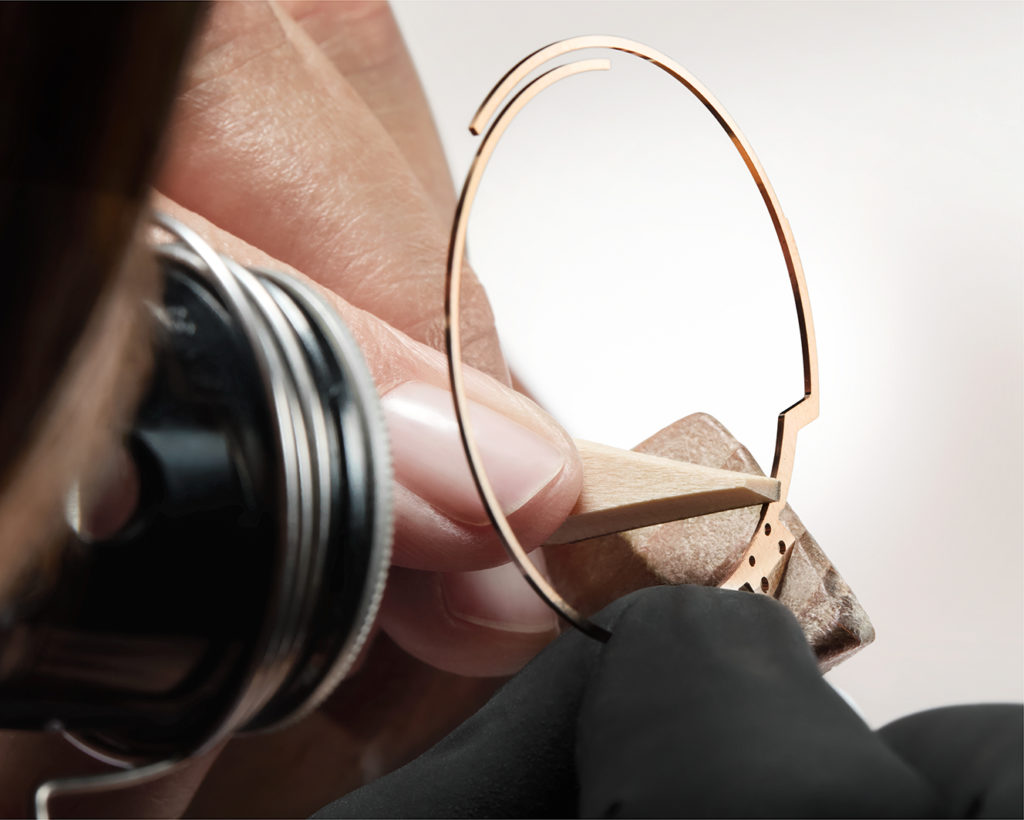
RC: Well, according to the press release, there are 26 bridges on this movement, and these, together with the mainplate, are crafted from 18K gold. You can expect to see their unrestrained use of traditional hand-finishing techniques on both visible and hidden surfaces. Anglage is particularly mentioned during the presentation. There are 135 inward angles across all bridges, and they were executed at a 30° angle instead of the regular 45° angle in order to maximise reflection of light with the upward surfaces.
AS: The logistics of making the Grande Double Sonnerie are very impressive indeed because I imagined that the brand would need to dedicate watchmakers exclusively for this. On that note, there are two watchmakers involved here, from start to finish, and they get the honour of adding their names in the secret style. On the back of the gold Blancpain plaque, you will find ‘Romain’ or ‘Yoann’ engraved there, although the only way you will find this information is by disassembling the movement, which we do not recommend! Maybe buy two if you want to pursue that… Seriously though, I was deeply impressed that Blancpain is putting the watchmakers forward like this because the practice of big brands relegating their watchmakers to being faceless grunts has been heavily criticised by collectors. If you own this watch, you will no doubt imagine Romain or Yoann working diligently on some delicate bit of anglage that you can appreciate with your loupe. There is a certain degree of satisfaction in knowing that human story, I think – even beyond that new 30° milestone, which we heard may well become the new standard at Blancpain.
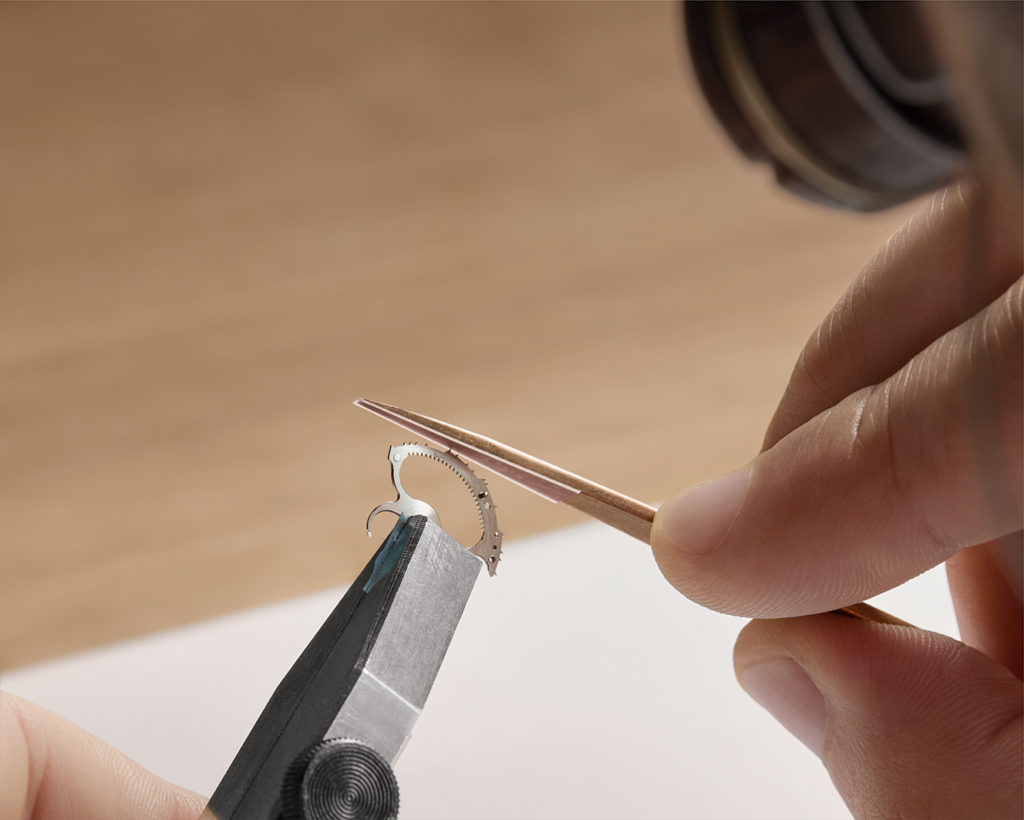
DG: Another interesting tidbit I learned while on this trip was that the Grande Double Sonnerie was also double assembled. Unlike some brands that assemble unfinished components first to adjust everything before disassembling and finishing the pieces, Blancpain starts even the first assembly with some finished pieces. Considering the amount of painstaking hand finishing, I would imagine this would be quite daunting for the watchmakers. But apparently this is necessary because for components like the pièce des quarts which was mentioned earlier, the process of adjusting the teeth can take quite a fair bit of time. To prevent dust from entering the movement, it is only after all the fine adjustments are made that the watch is disassembled so that the final assembly can happen in a dedicated clean room.
RC: I must have been paying not enough attention to this part of the tour. Was this mentioned in the presentation lab downstairs? Or later when we were in the assembly room upstairs?

DG: This was in the assembly room upstairs among the master watchmakers quietly and diligently working on their crafts. It is easy to get distracted by gentian wood used in some of the finishing work. Or maybe it was the stacks of technical documents on the Grande Double Sonnerie just casually laid out on the table.
RC: Yes, yes, yes. I must have been too distracted upon learning that the wood they use in the bevelling work is from the same gentian tree whose roots are used to make that clear liquor served as an aperitif or digestif … which was also appropriately served at our lunch at the manufacture.
AS: I almost got lost in the technical details because the 21 patents for the movement were laid out before us, ever so invitingly, in folders but I held myself back. This was especially tough because everyone else ignored them! But if I started with the patents, I would have never left. And if I did that, I would have missed all the craftspeople doing the handwork that really makes a difference here. As you guys noted, they even developed special tools and techniques to work on the bridges, plates, wheels and so on of calibre 15GSQ. This is only to be expected at this level of watchmaking because to get the quality you need, each artisan needs very specific tools. Happily, they did not introduce the woody digestif till later or I definitely would have been super distracted. It is not a taste that works easily for everyone’s palette, and on that note…
DG: And after learning all that, it blew me away when Mr Hayek just casually mentions that for these pieces, they will be open to customer personalisation! I mean usually, when it comes to chiming watches, brands are very adamant that this material and design configuration makes the best sound and that’s that. But Blancpain is open to working with clients to make the watch that the clients want, and would be most likely to take out of the safe and wear. I mean to hear Hayek say he is curious how the watch would sound if a client wants the case in titanium…or with a dial…that was quite special.

RC: Oh, I thank you for bringing this up because I learned something very special from the interview, that is not mentioned in the press release for the Grande Double Sonnerie. You can, if you are willing to spend, personalise even the melodies!
Hayek did say that this watch is about “the person, the emotion, the story”. So if the client is willing to invest the time and the money or maybe has a friend who is a musician or a composer, Blancpain is happy to personalise the melodies for your unique experience, provided that they fall within the constraints of the four notes.
Ok. It has been two hours of flat-out writing and I don’t know how many pages this will result in. Let me ask you both for a closing remark on either this entire Grande Double Sonnerie unveiling experience or the importance this significant timepiece carries in terms of the direction in which Blancpain is going.
AS: I do not know about directions but you opt for a good word there: timepiece. Most other watches are just that – watches. This one is different and you do not need to master all the technical details to appreciate it. If looking at the exacting finishing touches does not quite do it, listening to the melodies will. So, you can both see and hear to believe! Far too many so-called special watches are just checking boxes and waving bona fides aggressively. The Grande Double Sonnerie is the real deal, and I suppose that says something about Blancpain.
DG: I too can’t speak about where Blancpain is headed. But what I can speak about is that they absolutely chose the correct method to unveil this timepiece, which is at their manufacture, amongst the people that dedicated countless hours (eight years) to make this watch happen. This is a timepiece that needs to be experienced to be understood. Its price tag is hefty, but it is only when you see all the work that went into making it (the research, the fine tuning, the assembly, the finishing, and so many other invisible functions) that you look at the price tag and say, sounds about right.
RC: You both have covered very well the exaltedness of this Grande Double Sonnerie. Let me add that I take this well-planned release as a departure from the confusion left in my heart by some of the novelties released in the last years of Baselworld. Several watch models were introduced at the time, most of them in the Villeret collection, with sufficient details but absolutely inadequate visuals and almost zero promotion afterwards. They did not even stay long in the collection and that made me sad because they were different from the offerings of the other brands at the same price level.
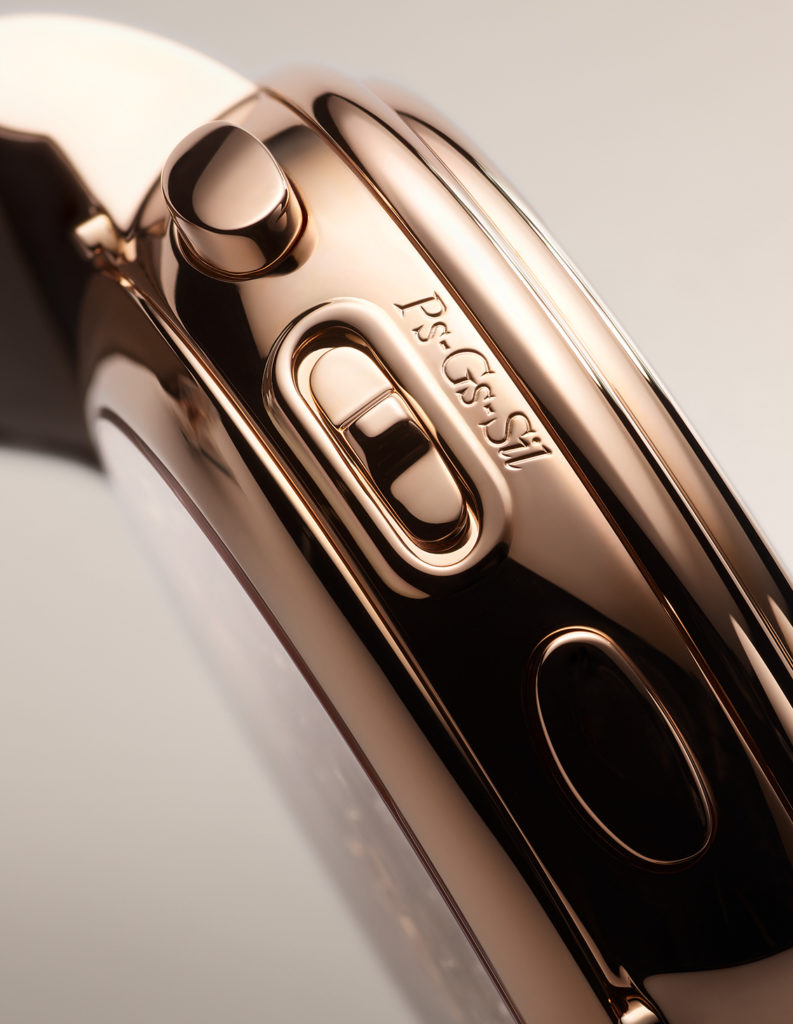
With this Grande Double Sonnerie, the visuals are superb in that they illustrate very well the intricacy and the soulfulness of a handcrafted product that will stay with you for a lifetime. While I don’t expect Blancpain to have this same in-person presentation treatment for other, more accessible novelties in the future, I would at least hope for similar beauty shots and perhaps know-how shots every now and then. Having said that, I think we started to see this important improvement already earlier this year with the photographs that accompanied the releases of the new 42mm Fifty Fathom in stainless steel, the new Fifty Fathoms Tech in the permanent collection, and, most recently, the new Golden Hour-themed Villeret watches. This is the most effective way to inspire buyers, if you ask me.
So, to our dear readers, we hope you enjoyed the unique way in which we bring this Grande Double Sonnerie watch to your attention. And, to the fine people of Blancpain in Le Brassus, in Paudex, in Singapore and in Bangkok, we thank you for letting us discover the Grande Double Sonnerie in this most insightful manner. We are sure that this marks the beginning of an important decade leading up to the brand’s grand celebration of the 300th anniversary in 2035!
